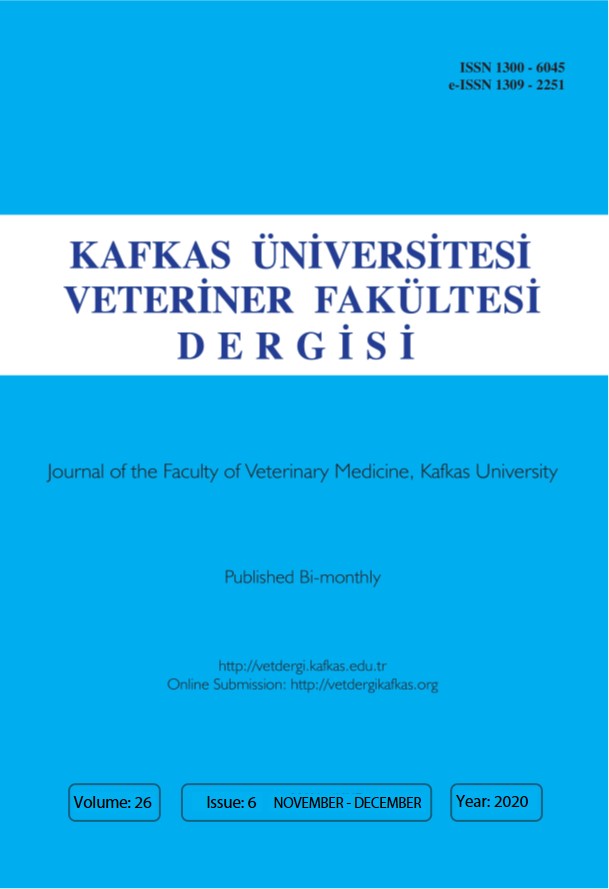
This journal is licensed under a Creative Commons Attribution-NonCommercial 4.0 International License
Kafkas Üniversitesi Veteriner Fakültesi Dergisi
2020 , Vol 26 , Issue 6
Impact of Temperature and the Length of Exposure on Morphological Characteristics of Erythrocytes in Antemortem and Postmortem Analysis -Experimental Study on Wistar Rats
1Department of Forensic Medicine, Faculty of Medicine, University of Sarajevo, Sarajevo, BOSNIA AND HERZEGOVINA2Department of Pathological Physiology of Domestic Animals, Veterinary Faculty, University of Sarajevo, BOSNIA AND HERZEGOVINA
3Department of Epidemiology, Public Health Institute of Canton Sarajevo, Sarajevo, BOSNIA AND HERZEGOVINA
4Department of Pathological Physiology of Domestic Animals, Veterinary Faculty, University of Sarajevo, BOSNIA AND HERZEGOVINA
5Department of Medical Biochemistry, Faculty of Medicine, University of Sarajevo, Sarajevo, BOSNIA AND HERZEGOVINA DOI : 10.9775/kvfd.2020.24352 Changes in red blood cell morphology can be induced by various stimuli. In order to investigate the effects of different temperature intensities (37°C, 41°C, and 44°C) and exposure time (20 min and until the time of death) on erythrocyte morphology, heat stress was used on a rat model. Thirty-five Wistar rats were divided into three groups: 37°C as control group, 41°C and 44°C as trial groups. The trial groups were classified into antemortem the exposure time of 20 min and postmortem groups exposure time until fatal outcome. The anaesthetised rats were exposed to preheated water using the water bath. May-Grünwald-Giemsa colouring technique was applied on blood samples taken from the abdominal aorta. The light microscopy was performed (Motic Type 102M) to detect poikilocytes. Target cells and anulocytes were predominant in antemortem groups, while anulocytes and spherocytes in postmortem groups 41°C and 44°C, respectively. No difference in poikilocyte number was found between antemortem and postmortem groups 41°C and 44°C. Spherocyte number was significantly higher in postmortem than antemortem group 41°C (P=0.001) and dacryocytes with spherocytes in postmortem group 44°C (P=0.002, P=0.017, respectively). Poikilocytosis is associated with the exposure length and temperature intensity. Spherocytosis and anulocytosis are the most frequent in postmortem groups while target cells and anulocytes in antemortem groups. Following a fatal outcome, spherocytes at 41°C and dacryocytes with spherocytes at 44°C were significantly more than in corresponding antemortem groups. Keywords : Heat, Poikilocytosis, Antemortem, Postmortem, Rats











